Bringing the Colour Back to the Emerald City
Applying a digital technicolor process
People online have been remarking that the Wicked movie looks desaturated, bleak, and depressing and not at all like the 1939 Wizard of Oz's magical and glorious Technicolor.
The director, Jon M. Chu, justified it this way:
I mean, there’s colour all over it. I think what we wanted to do was immerse people into Oz, to make it a real place. Because if it was a fake place, if it was a dream in someone’s mind, then the real relationships and the stakes that these two girls are going through wouldn’t feel real. It’s also [presented in] a way we have not experienced Oz before. It’s been a matte painting. It’s been a video game digital world. But for us, I want to feel the dirt. I want to feel the wear and tear of it. And that means it’s not plastic.1
Ok, yeah, sure, but c'mon. It's the merry old land of Oz! It's one of the most memorable colour sequences in the history of film!2
And since I have a digital technicolor process just sitting around, I thought it might be fun to see what Wicked might look like in Technicolor, or at least as close as we can get without re-shooting everything on a Technicolor IV camera, recreating an entire technicolor lab, and resurrecting lost film stocks.
If you want details on how my process works, check out the The Digital Technicolor Processes articles. All of my processes are based on what was done digitally by Rob Legato's VFX team to recreate a Technicolor look for The Aviator in 2004. For this demo, I'm going to use the Technicolor IV Gold process, since it models the gold sputtered beamsplitter that would have been used in 1939 in the Technicolor IV camera, rather than the Dichrotic beamsplitter Technicolor IV silver process used in late 1950's in films like Singing in the Rain.
It's quite easy. All I had to do was apply my already pre-built LUT (look up table), or in this case LUTs.
First off, Elphaba, played by Cynthia Erivo. Here's the original from Trailer #2.
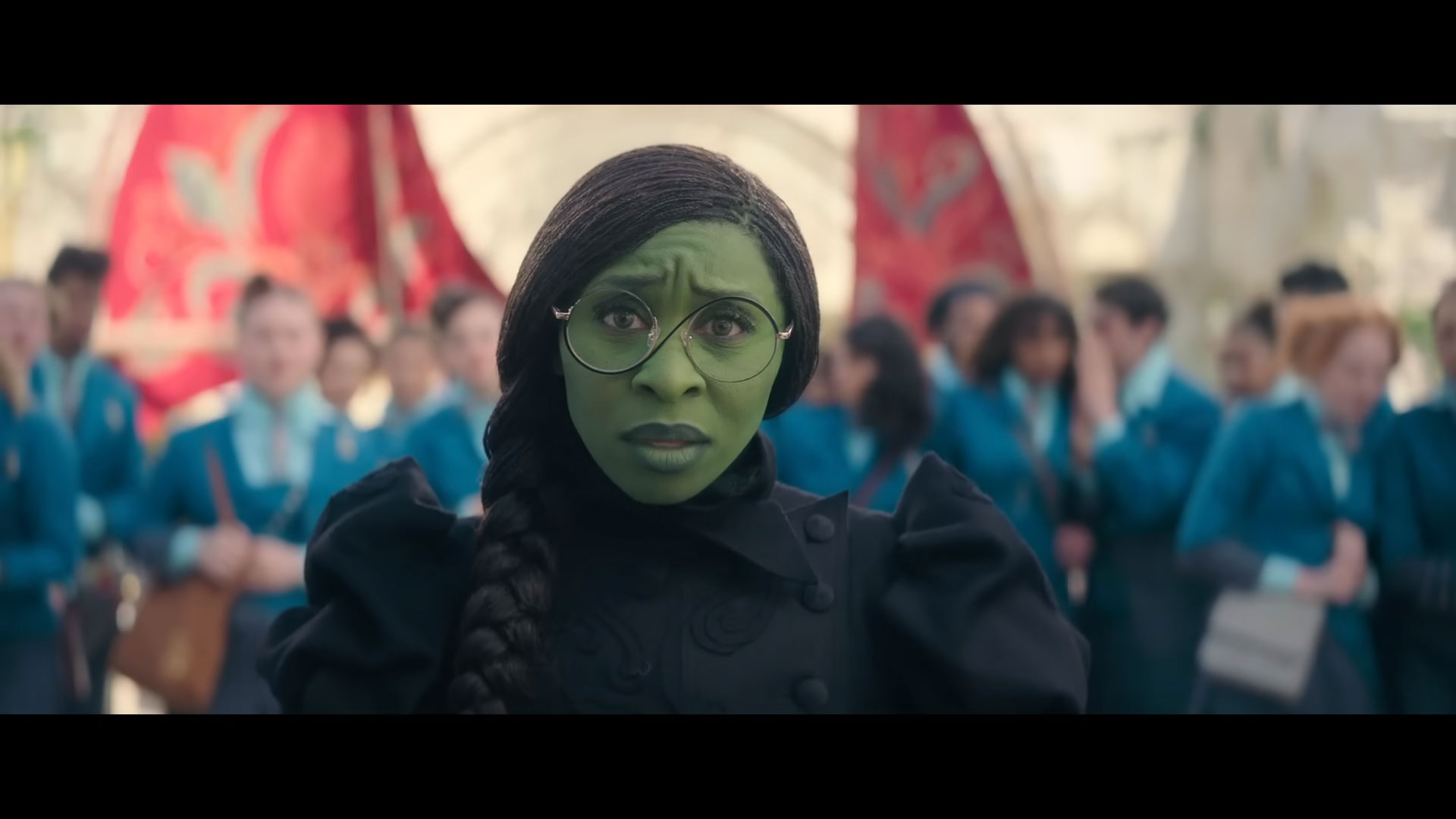
And now, with Digital Technicolor!

This gives it the yellow colour shift from the gold mirror on the red and blue separations, shifts the reds significantly to a more technicolor red and slightly shifts the blues. It also darkens the image a bit. It's technically correct, but it doesn't feel enough like technicolor should for me. I want more.
When Rob Legato was making The Aviator's technicolor process, he mentioned that the Technicolor filtering was very discerning, which lead him to matte filtering out the opposing colours to make the colour separations. For example, the red colour separation used a blue and green matte to reduce what he called cross talk from colours bleeding into the red channel.
The result of his filtering was a very "popping" colour effect that you can see in the later half of the film when it goes to 3-channel colour. I used only a multiplied colour solid to model the filtering for my Technicolor IV LUT. The result was logically correct, but not emotionally correct. Legato's 3-strip was more like how Technicolor felt, but not so much how it technically looked. Was he more right? Who cares? Dye-transfer Technicolor is supposed to jump off the screen. It was supposed to dazzle. So why not. Let's try layering in an additional Aviator 3-strip technicolor LUT into the image from Wicked and see what we get.
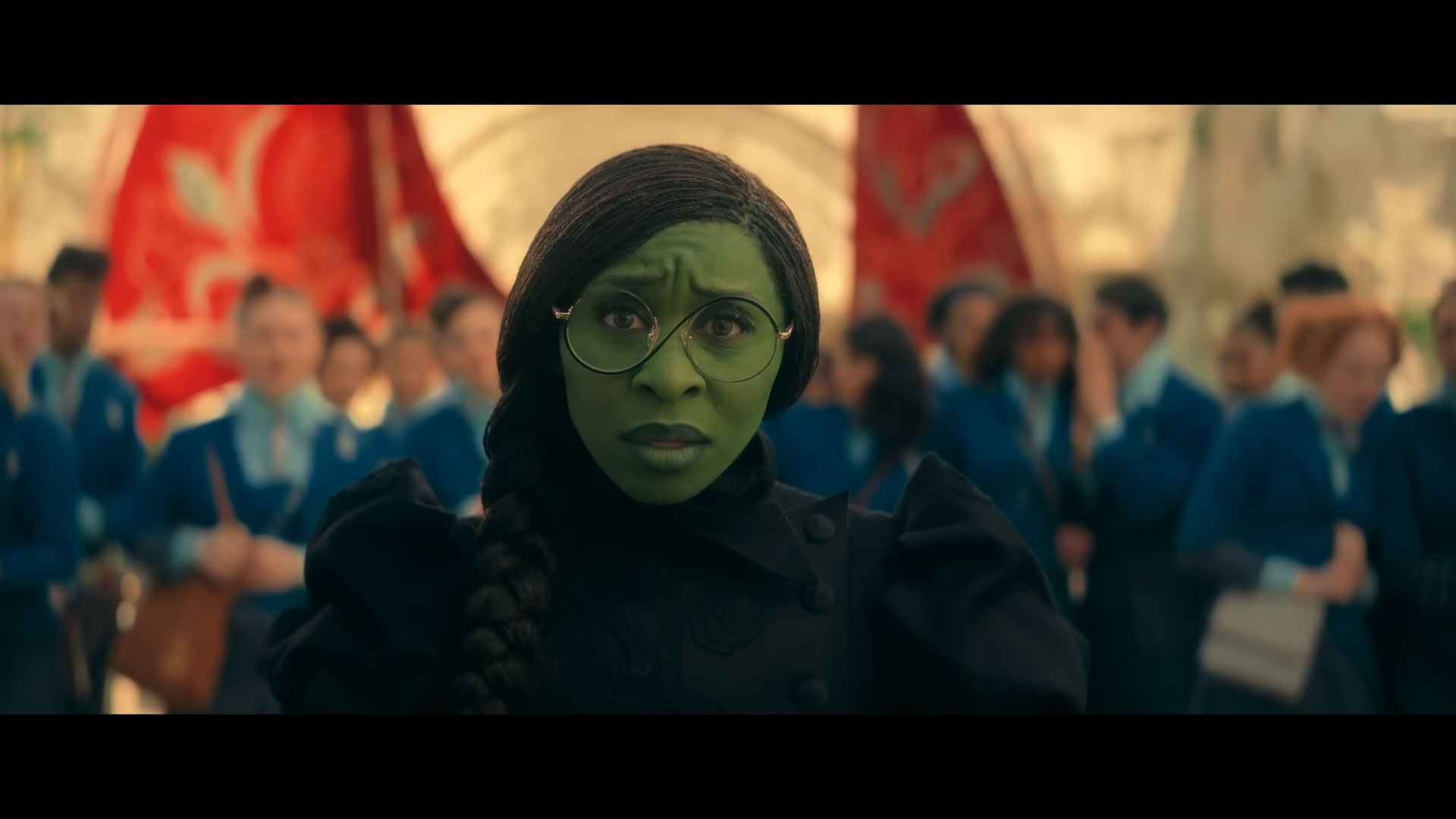
Now we're talking. That's some movie magic right there.
How different is this from just adding saturation? Here's 30% saturation added to the original image.

Now it really feels right. Here's some other images from Trailer #2, using both LUTs applied.




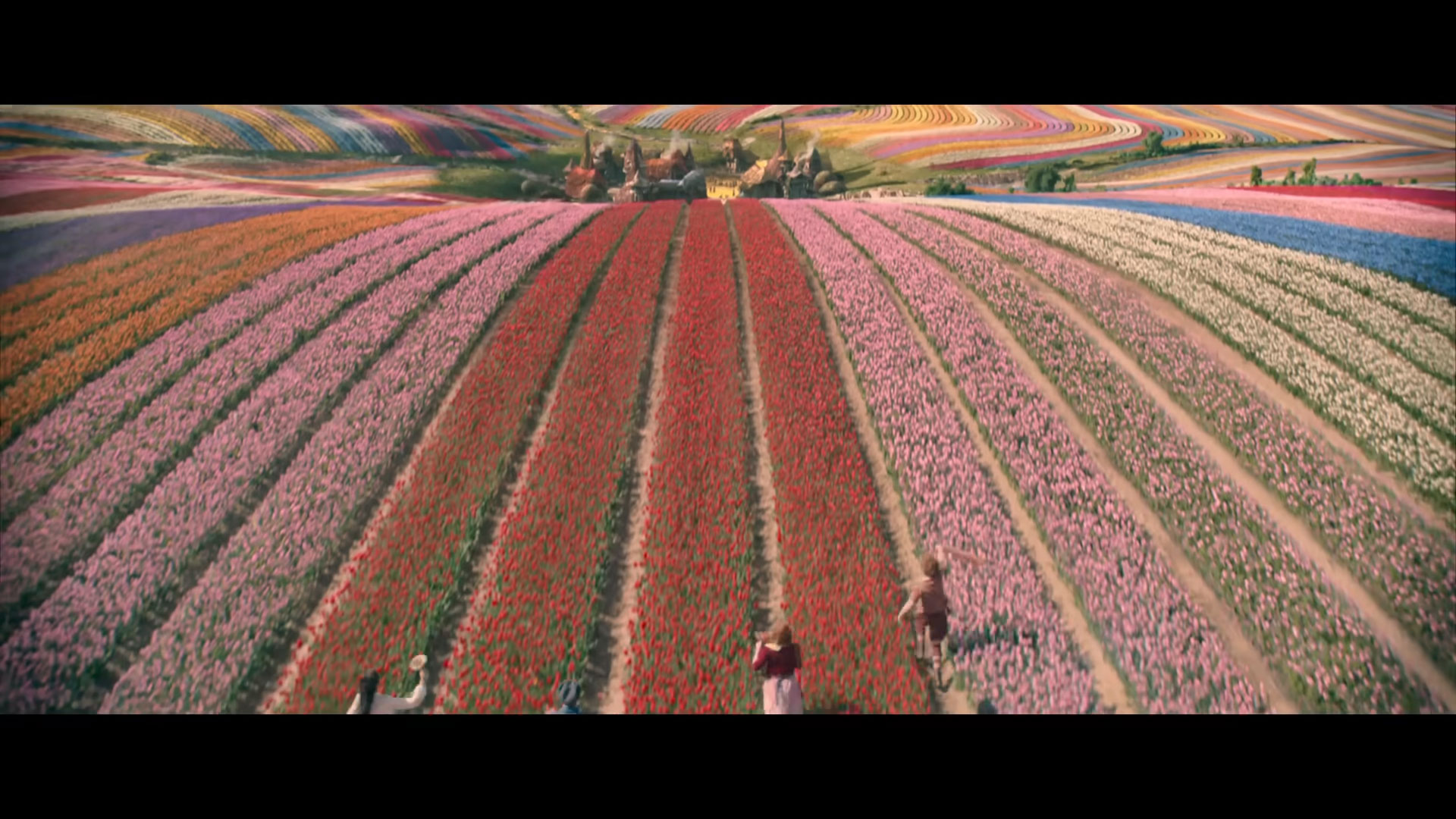
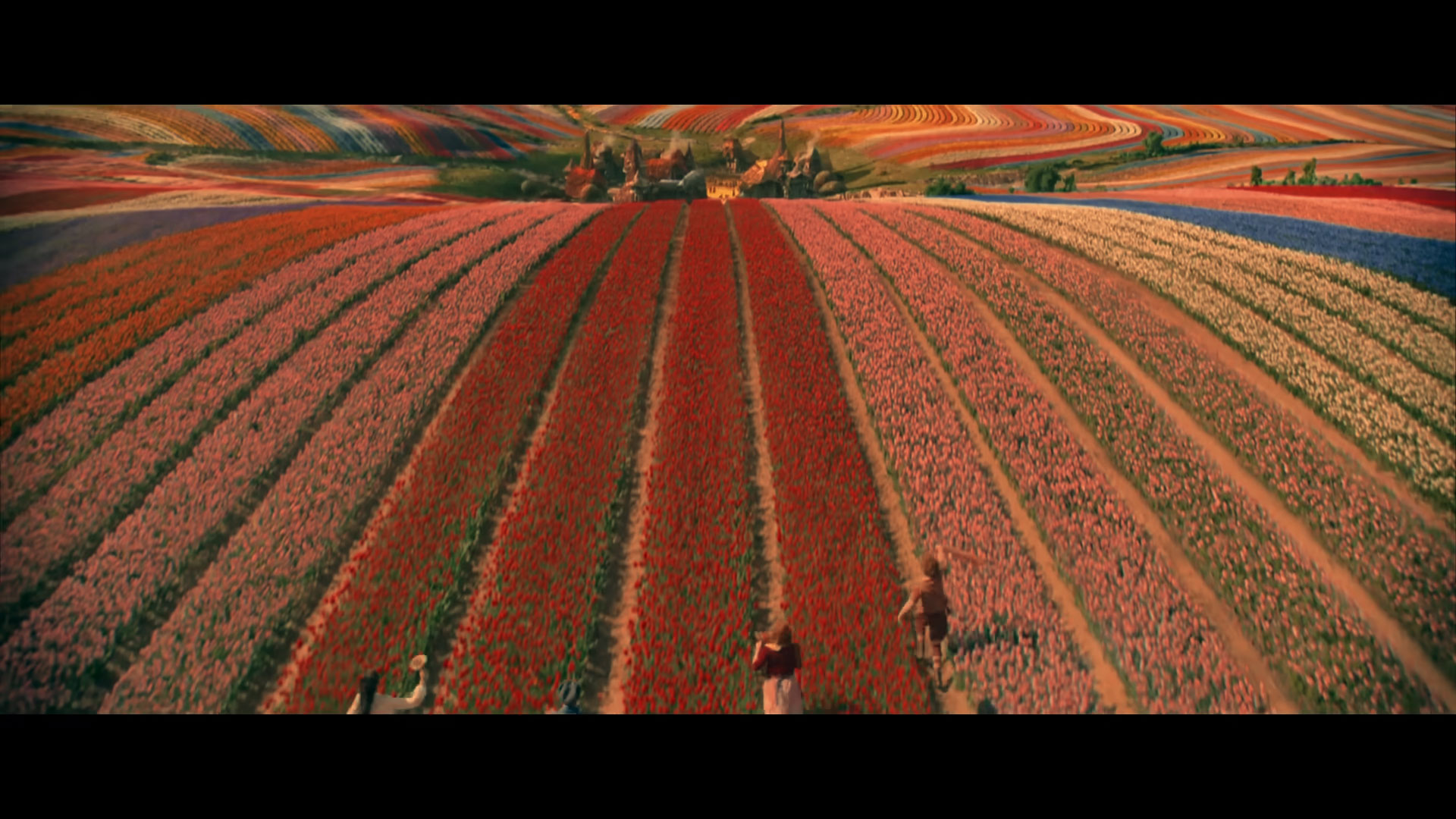
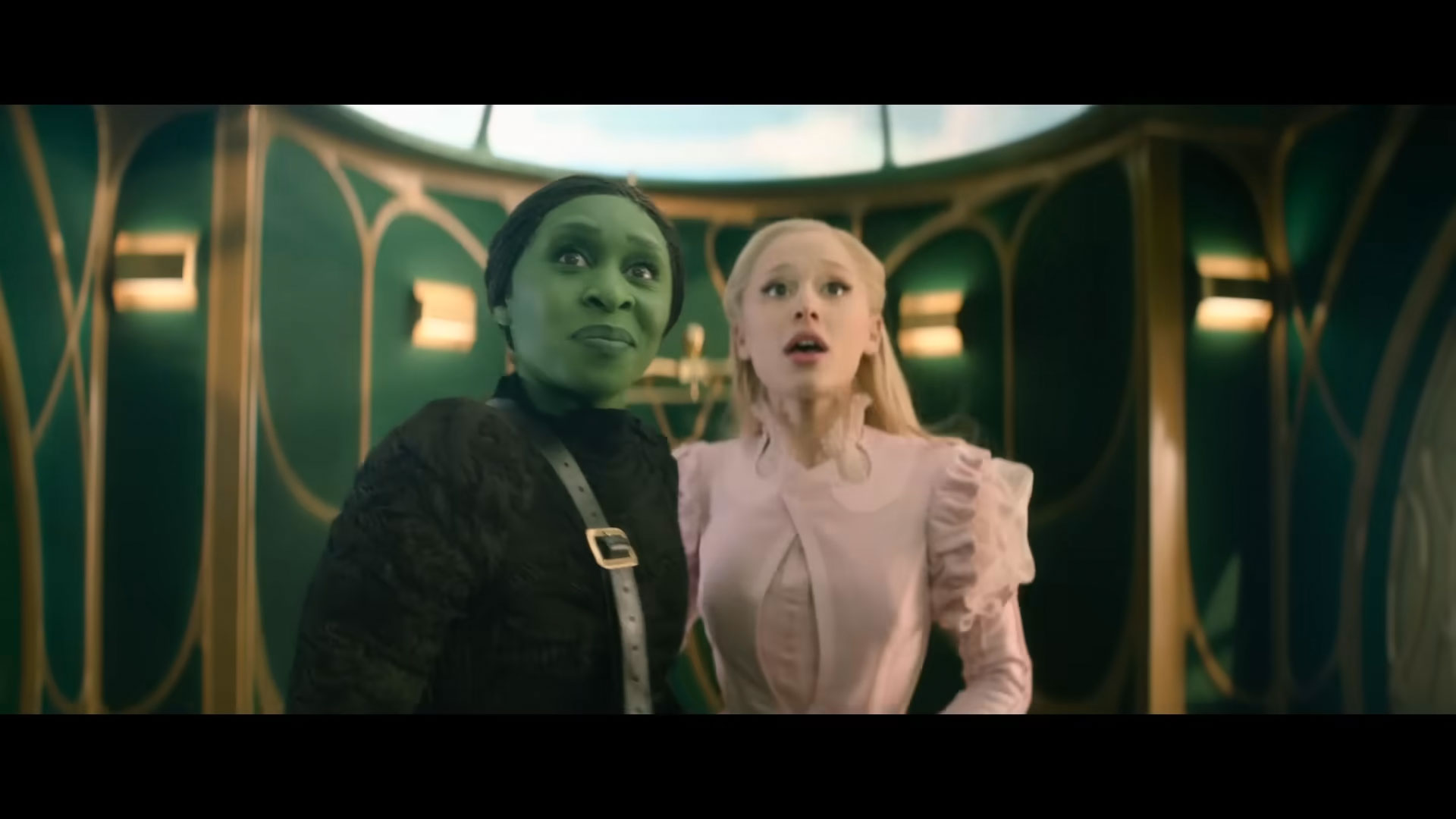


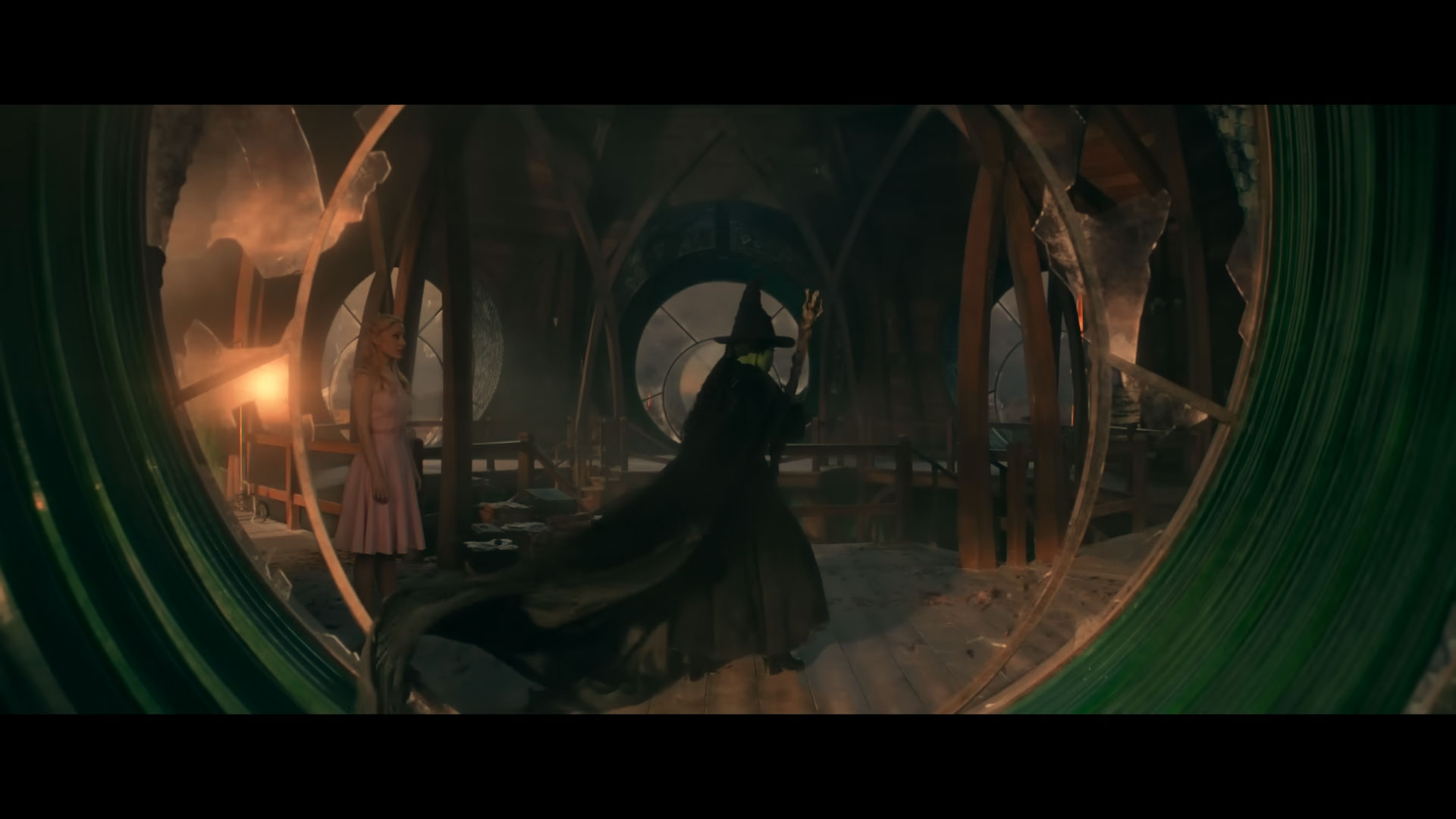
Finally
Here's the whole trailer, re-coloured.
Published December 8, 2024.
Permalink to this article.
Notes
- https://www.cinemablend.com/movies/wickeds-director-defends-glorious-technicolor-look-dirt-jon-m-chu-color-grading
- On a fun side note, watch for the shadow of the giant technicolor camera on the flower stems at 1:16.
